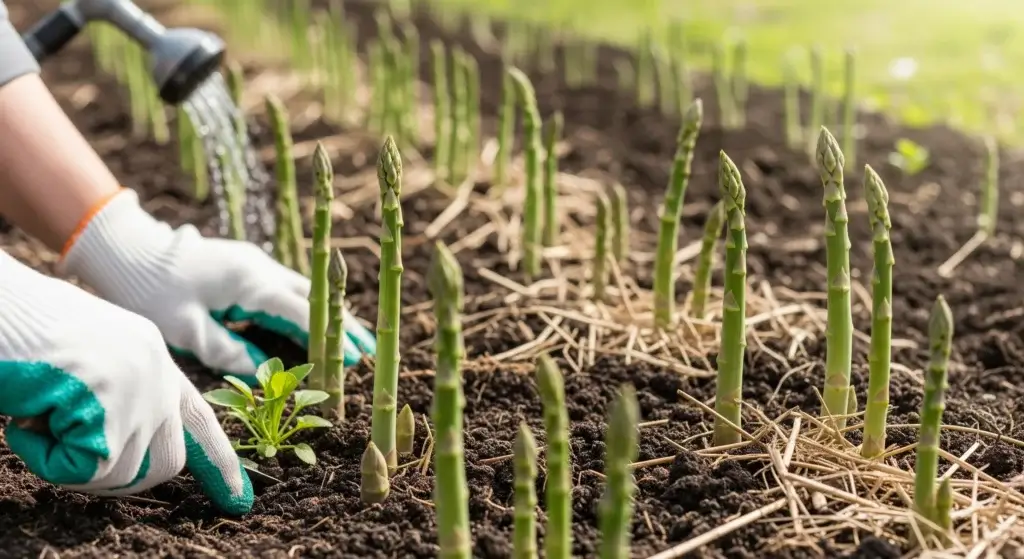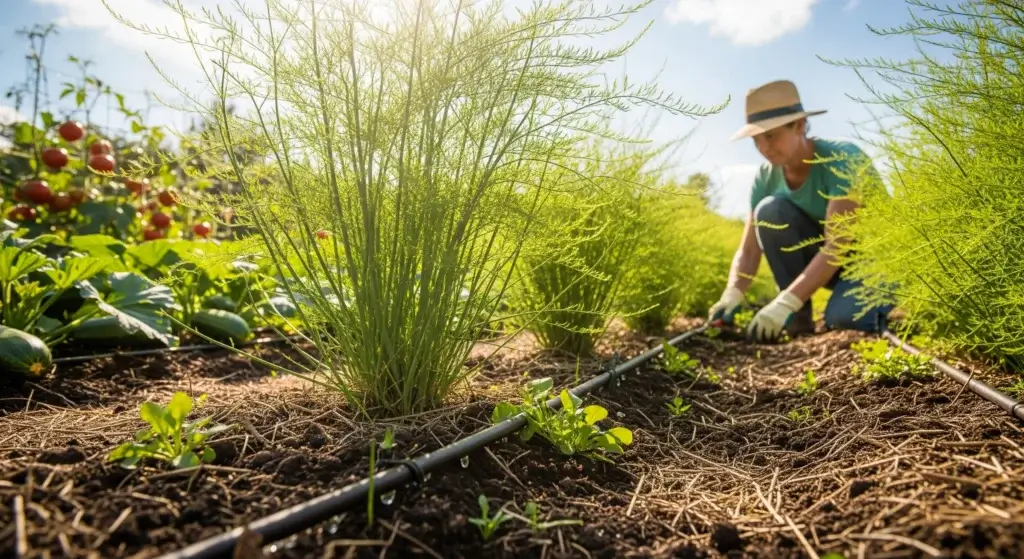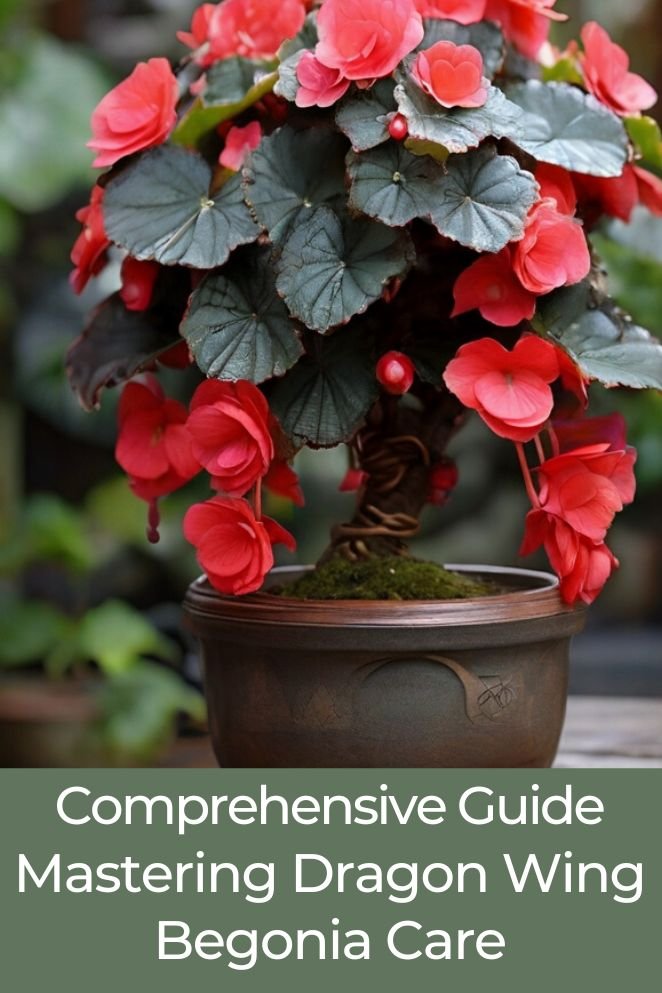
Welcome to our in-depth guide on caring for Dragon Wing Begonias.
Throughout this comprehensive resource, we will explore the nuances of nurturing these exquisite plants.
We’ll provide valuable insights into various varieties, optimal growing conditions, propagation techniques, and effective strategies for maintaining the health and vigor of these beautiful plants.
Additionally, we’ll share tips on preventing and addressing common issues such as pests and diseases.
Join us as we unravel the art of cultivating and tending to Dragon Wing Begonias with care and expertise.
About Dragon Wing Begonia
The scientific name of Dragon Wing Begonia is Begonia × hybrid ‘Dragon Wing’. The “×” symbol in the scientific name indicates that it is a hybrid plant.
The specific cultivar name, ‘Dragon Wing,’ is often included to denote the specific hybrid variety within the Begonia genus.
Dragon Wing Begonias, hailing from the Begoniaceae family, are renowned for their striking, angel-wing-shaped leaves and clusters of delicate, pendulous flowers.
These begonias have earned their place as prized ornamental plants, adorning gardens, patios, and even interior spaces with their vivid colors.
- Read also: A Guide to Dracaena Colorama Care
- Read also: Succulents Watering Tips

Physical Characteristics of Dragon Wing Begonia
Leaf structure
The leaves of Dragon Wing Begonias are large, glossy, and asymmetrical.
They typically have a wing-like shape, resembling the wings of a dragon, which gives the plant its unique name.
The foliage displays a vibrant green hue with a glossy sheen.
Some varieties may also have reddish or bronze undertones, adding to the plant’s visual appeal.
Flower type
Dragon Wing Begonias produce clusters of pendulous flowers.
These blooms are often vivid red or pink, creating a striking contrast against the lush green foliage.
The flowers are tubular and appear in abundance, enhancing the overall beauty of the plant.
Stems
The stems of Dragon Wing Begonias are succulent and fleshy, providing the plant with resilience and adaptability.
They are sturdy enough to support the weight of the cascading foliage and vibrant flowers.
Depending on the variety, Dragon Wing Begonias can reach a height and width of approximately 12 to 18 inches.
Their compact and bushy nature makes them versatile for various planting arrangements.
Varieties of Dragon Wing Begonia
The world of Dragon Wing Begonias is rich with diversity, boasting various cultivars that cater to different preferences and climates.
From the classic Dragon Wing Red to the sophisticated Dragon Wing Pink, each variety adds its unique flair to the begonia family.
Some popular varieties of Dragon Wing Begonia include:
Dragon Wing Red
This variety is known for its classic, vibrant red flowers and glossy green foliage. It is one of the most widely recognized and cultivated types of Dragon Wing Begonia.
Dragon Wing Pink
Featuring charming pink flowers, this variety adds a softer and more delicate touch to garden landscapes. The glossy green leaves complement the rosy hues of the blooms.
Dragon Wing White
A striking choice with elegant white flowers, this variety offers a refreshing and clean look. The contrast between the white blooms and green foliage creates a visually appealing display.
Dragon Wing Begonia ‘Baby Wing’
This is a compact version of the traditional Dragon Wing Begonia, making it ideal for smaller spaces or containers. It retains the characteristic wing-like leaves and vibrant flowers.
Dragon Wing Begonia ‘Luscious’
This variety is known for its larger-than-average flowers and robust growth. The blooms can be either red or pink, and the plant has a vigorous, spreading habit.
Dragon Wing Begonia ‘Bronze Leaf’
Characterized by bronze-toned foliage, this variety adds a touch of warmth and depth to the garden. The foliage complements the red or pink flowers, creating a visually appealing combination.
Dragon Wing Begonia ‘Big’
As the name suggests, this variety is notable for its larger overall size, including both leaves and flowers. It creates a bold and impactful presence in gardens or containers.
Dragon Wing Bicolor
A captivating blend, this Begonia features blooms with two contrasting colors, often red and white or pink and white. Its dynamic look adds visual interest to your garden or patio.
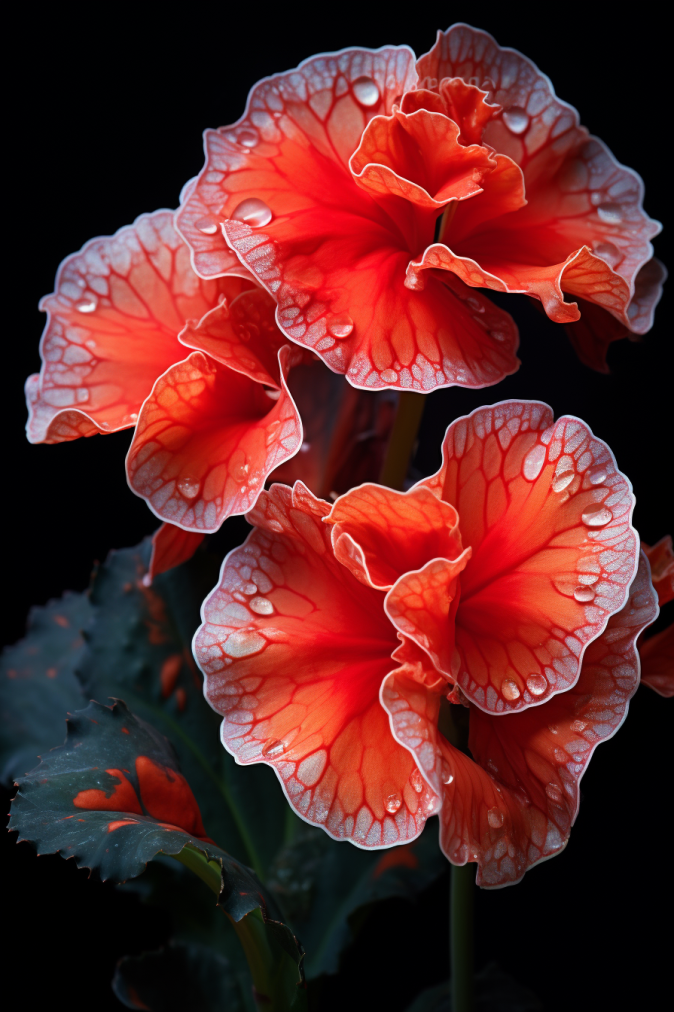
Ideal Conditions for Dragon Wing Begonia to Thrive
To unlock the full potential of your Dragon Wing Begonias, it’s crucial to provide them with optimal growing conditions.
Here are the ideal conditions for these beautiful plants to thrive:
Light
Indoors
Bright, indirect sunlight is best. South-facing windows are ideal, but avoid harsh afternoon sun that can scorch the leaves.
Outdoors
Dragon Wing Begonias prefer bright, indirect light.
They thrive in filtered sunlight or partial shade.
Avoid exposing them to intense, direct sunlight for extended periods, as this can lead to leaf scorch.
In warmer climates, partial shade with morning sun and afternoon shade is preferred.
In cooler climates, full sun can be tolerated.
Temperature
To ensure your Dragon Wing Begonias thrive, it’s essential to maintain a stable temperature between 60°F to 75°F (15°C to 24°C).
These plants are sensitive to cold, so it’s crucial to shield them from frost. Additionally, be mindful of drafts and sudden temperature fluctuations.
Avoid placing them close to heaters or air conditioners, as extreme temperature changes can negatively impact their well-being.
Providing a consistent and moderate environment will contribute to the overall health of your Dragon Wing Begonias.
Humidity
Dragon Wing Begonias appreciate moderate to high humidity levels.
If you’re growing them indoors, especially in drier climates, consider using a humidity tray or placing a humidifier nearby to provide the required moisture.
Soil
Use a well-draining, lightweight potting mix rich in organic matter.
A mix formulated for begonias or general-purpose potting soil works well. Ensure the soil retains moisture without becoming waterlogged.
Watering
Keep the soil consistently moist but not waterlogged.
Water when the top inch of the soil feels dry to the touch.
Avoid letting the soil completely dry out, as Dragon Wing Begonias prefer slightly moist conditions.
In warmer months, you may need to water more frequently.
While in cooler months, less frequent watering is required. Always adjust based on the specific needs of your plant.
Fertilization
Make sure to give your Dragon Wing Begonias a regular feeding during the growing season, which is in spring and summer.
Opt for a balanced, water-soluble fertilizer for this purpose.
However, it’s important to skip the fertilizing routine during fall and winter when the plant isn’t actively growing.
Container
When planting in pots, make sure to pick containers with drainage holes.
This helps water escape, preventing the roots from getting too wet and avoiding rot.
Also, ensure the pot is spacious enough for the plant to grow comfortably. Repotting is necessary every 1-2 years, especially if the roots start feeling cramped.
To encourage uniform growth, rotate the pot regularly.
Pruning
Regularly prune to maintain a bushy and compact shape. Pinch back the tips to encourage branching and more prolific flowering.
Remove any yellow or dead leaves to promote overall plant health.

Propagation of Dragon Wing Begonia
There are two main methods for propagating Dragon Wing Begonias: stem cuttings and division.
Both methods are relatively easy and can be done at home with a few simple tools.
Propagation by stem cuttings
Materials needed
- Sharp, sterilized pruning shears or secateurs
- Glass or jar for rooting (optional)
- Potting mix with good drainage
- Pot with drainage holes
- Water spray bottle
Propagation instruction
Step 1
Choose a healthy stem (healthy Dragon Wing Begonia mother plant) that is at least 4-6 inches long and has several leaves.
Step 2
Use sharp, sterilized pruners to make a clean cut just below a leaf node.
Step 3
Remove the lower leaves from the stem, leaving 2-3 leaves at the top.
Step 4
You can either pot the cutting directly in a pot with a moist potting mix or root it in water first.
If rooting in water, place the cutting in a glass or jar filled with clean water, making sure the leaves are not submerged.
Step 5
Keep the cutting in a warm, well-lit location, but out of direct sunlight.
Step 6
Change the water every few days, and mist the leaves regularly.
Step 7
Once the cutting has developed roots that are about 1 inch long, you can pot it up in a pot with a well-draining potting mix.
Step 8
Water the newly potted cutting regularly, but avoid overwatering.
Propagation by division
Materials needed
- Sharp knife or gardening shears (sterilized)
- Container or pot with drainage holes
- Potting mix with good drainage
- Water
Propagation instruction
Step 1
Carefully remove the Dragon Wing Begonia from its pot.
Step 2
Gently loosen the roots with your hands.
Step 3
Use a sharp knife to divide the plant into two or more sections, each with several stems and roots.
Step 4
Repot each division in a pot with a well-draining potting mix.
Step 5
Water the newly potted divisions regularly, but avoid overwatering.
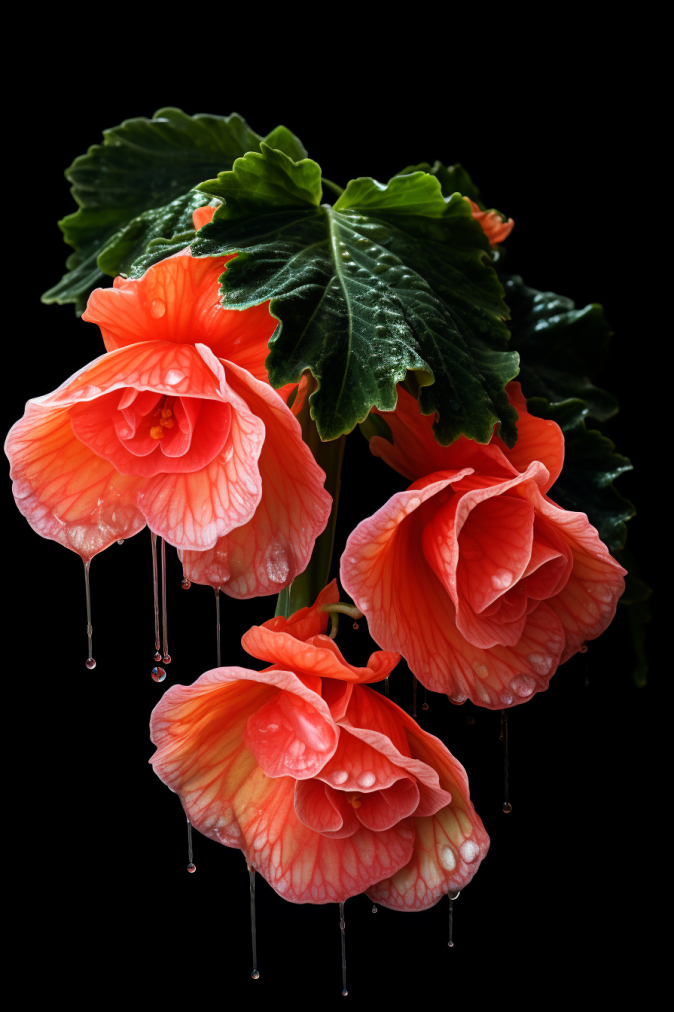
Pest and Diseases of Dragon Wing Begonia
Guard your Dragon Wing Begonias against common pests and diseases with proactive care and preventive measures.
Learn to identify potential threats, adopt organic solutions, and maintain a healthy environment for your begonias to thrive, free from the nuisances that could hinder their growth.
- Read also: Hanging Spider Plant Care
- Read also: The Ultimate Aloe Plant Watering Care Guide
Conclusion
As we conclude our journey through the care of Dragon Wing Begonias, we hope you feel empowered to cultivate these captivating plants with confidence.
With the right knowledge and attention, you can transform your garden or living space into a haven of beauty, adorned by the alluring presence of Dragon Wing Begonias.
Frequently Asked Questions
Watering frequency for Dragon Wing Begonias depends on factors like temperature, humidity, and soil conditions. Generally, keep the soil consistently moist but not waterlogged.
Yes, Dragon Wing Begonias can thrive indoors if provided with the right conditions. Indoor environments may require more attention to watering to prevent the soil from drying out.
While Dragon Wing Begonias can be propagated through stem cuttings, it’s not recommended to propagate them directly in water. These begonias tend to root more successfully in a well-draining potting mix.

